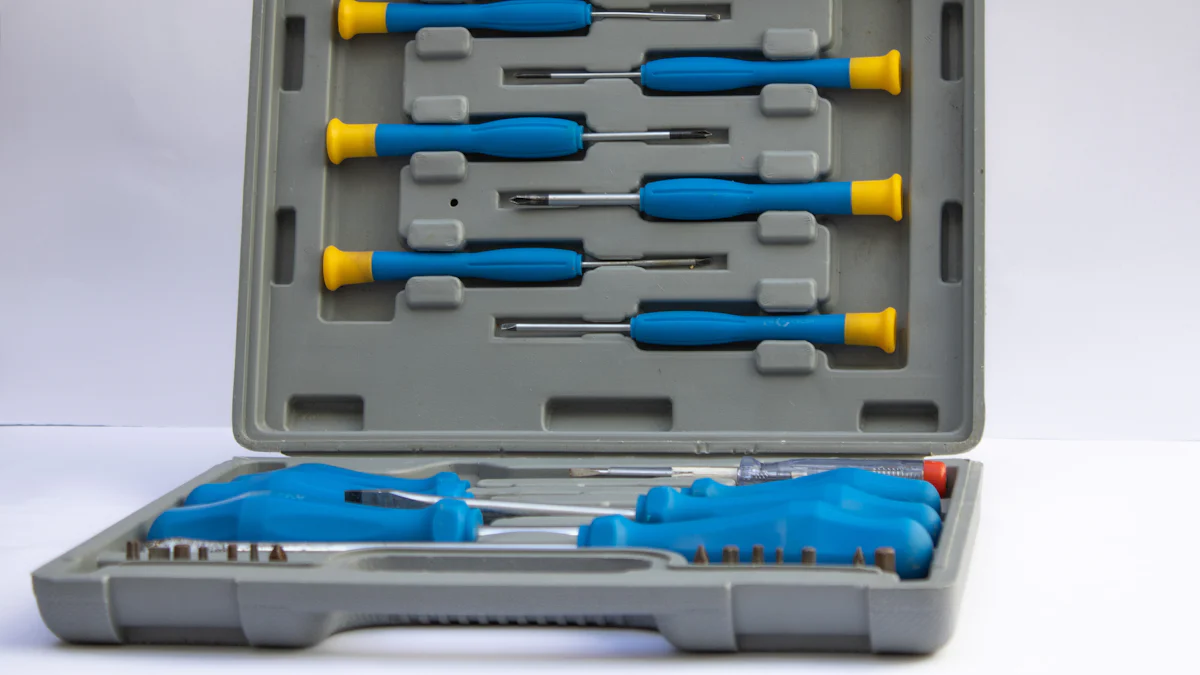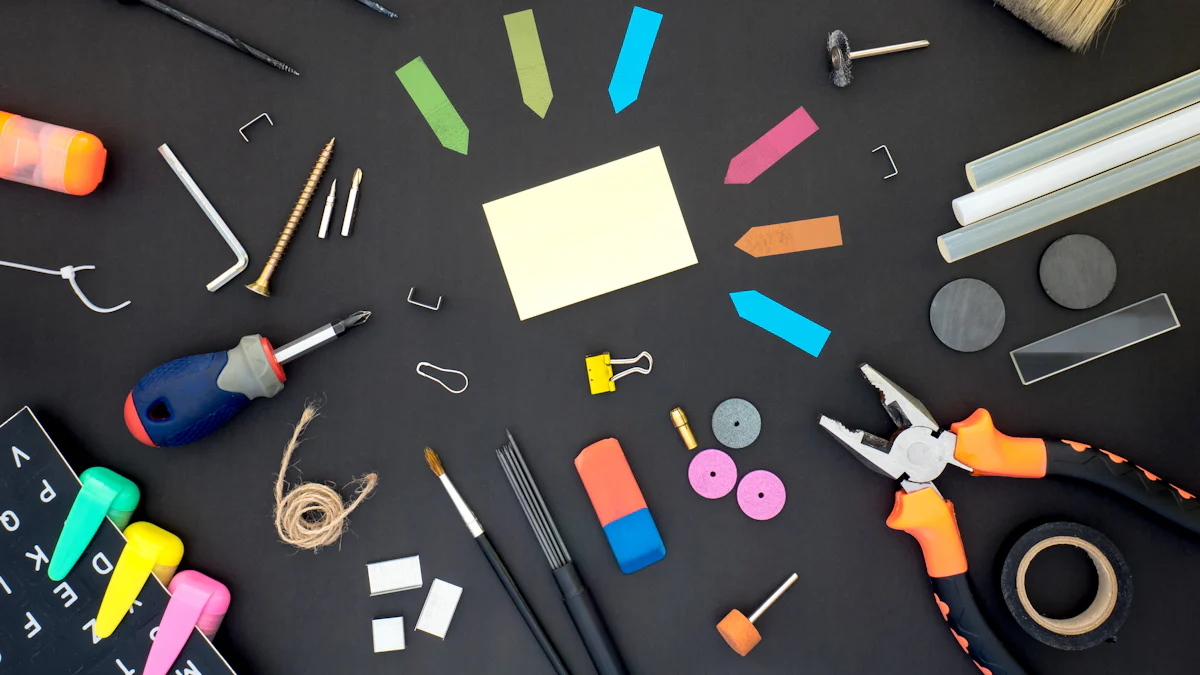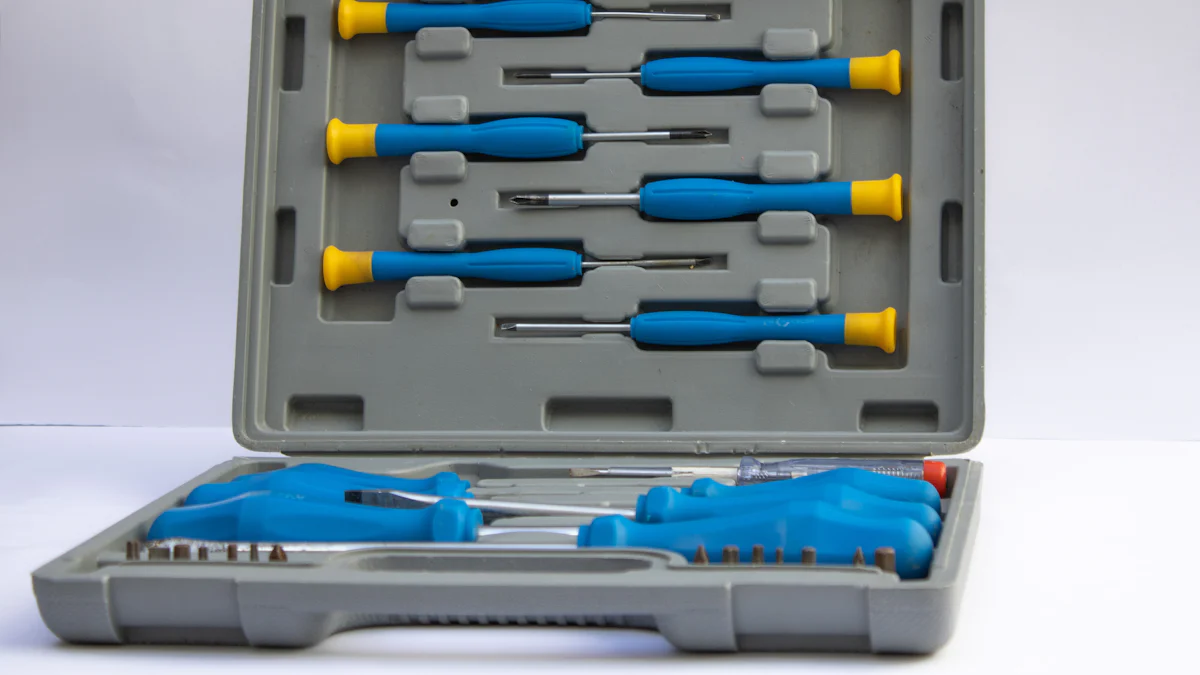
Choosing the right plastic hand tools holds significant importance in various industries. The correct tools enhance efficiency and safety. Plastic hand tools offer a wide range of applications, from cutting and gripping to measuring and fastening. These tools provide benefits such as lightweight design, corrosion resistance, and cost-effectiveness. This guide aims to help professionals and hobbyists make informed decisions when selecting plastic hand tools.
Understanding Plastic Hand Tools

Types of Plastic Hand Tools
Cutting Tools
Cutting tools serve a crucial role in various applications. These tools include items like riveting pliers and deburring tools. Riveting pliers assemble plastic panels with rivets after drilling. The rivet mandrel inserts into the pliers to create the riveted joint by squeezing the rivet sleeve. Deburring tools, equipped with profile scrapers and replaceable blades, deburr plastic sheet blanks and remove paint or adhesive residues.
Gripping Tools
Gripping tools ensure secure handling and manipulation of materials. These tools often feature ergonomic handles made from sustainable materials like wood or recycled plastics. The design aims to provide comfort and reduce strain during prolonged use.
Measuring Tools
Measuring tools offer precision in various tasks. These tools include rulers, calipers, and tape measures specifically designed for plastic materials. Accurate measurements are essential for achieving optimal results in projects involving plastic hand tools.
Fastening Tools
Fastening tools secure components together. These tools include screwdrivers, wrenches, and joint repair sets. The joint repair set consists of a joint cutter and a squeegee, ideal for removing old joints from skirting boards on tiles, laminate, parquet, or natural stone.
Materials Used in Plastic Hand Tools
Types of Plastics
Plastic hand tools utilize various types of plastics. Common materials include polyethylene, polypropylene, and polycarbonate. Each type offers unique properties suitable for different applications.
Durability and Strength
Durability and strength are key factors in selecting plastic hand tools. High-quality plastics provide robust performance and long-lasting use. Tools made from these materials withstand wear and tear, ensuring reliability in demanding tasks.
Environmental Impact
Environmental impact plays a significant role in the choice of materials. Many plastic hand tools now incorporate sustainable and recyclable materials. This approach reduces waste and promotes eco-friendly practices in tool manufacturing.
Advantages of Plastic Hand Tools
Lightweight
Plastic hand tools offer a lightweight design, making them easy to handle and reducing user fatigue. This feature is particularly beneficial for tasks requiring extended periods of tool use.
Corrosion Resistance
Corrosion resistance is another advantage of plastic hand tools. Unlike metal tools, plastic tools do not rust or corrode when exposed to moisture or chemicals. This property enhances the longevity and reliability of the tools.
Cost-Effectiveness
Cost-effectiveness remains a significant benefit of plastic hand tools. These tools often come at a lower price point compared to their metal counterparts. The affordability makes them accessible to a wider range of users, from hobbyists to professionals.
Factors to Consider When Choosing Plastic Hand Tools
Purpose and Application
Specific Tasks
Selecting plastic hand tools for specific tasks requires understanding the job requirements. Cutting tools like hand saws or jigsaws work well for slicing through hard plastics. Gripping tools such as pliers ensure secure handling during assembly processes. Measuring tools like calipers provide precise measurements essential for detailed projects. Fastening tools, including screwdrivers, secure components effectively. Each tool type serves a unique function that enhances task efficiency.
Versatility
Versatile plastic hand tools offer multiple functionalities, making them valuable in various applications. Multi-purpose tools reduce the need for multiple instruments, saving space and cost. For example, a combination tool that cuts and measures plastic materials can streamline workflow. Versatility in tools ensures adaptability to different project requirements.
Quality and Durability
Brand Reputation
Brand reputation plays a critical role in the selection of plastic hand tools. Reputable brands often guarantee high-quality products that meet industry standards. Trusted brands invest in research and development to produce reliable and efficient tools. Choosing tools from well-known brands ensures long-term performance and customer satisfaction.
Material Quality
Material quality significantly impacts the durability and effectiveness of plastic hand tools. High-grade plastics like polycarbonate and polypropylene offer superior strength and resilience. Tools made from these materials withstand wear and tear, ensuring longevity. Investing in high-quality materials reduces the frequency of replacements and repairs.
Ergonomics and Comfort
Handle Design
Handle design influences the comfort and usability of plastic hand tools. Ergonomically designed handles reduce strain and enhance grip during prolonged use. Handles covered in soft materials like foam or flexible plastic provide additional comfort. Proper handle design improves user experience and productivity.
Weight Distribution
Balanced weight distribution in plastic hand tools enhances control and reduces fatigue. Evenly distributed weight allows for smoother operation and precision. Lightweight tools minimize user strain, especially during extended tasks. Optimal weight distribution contributes to overall tool efficiency and user satisfaction.
Safety Features
Non-Slip Grips
Non-slip grips enhance the safety of plastic hand tools. These grips provide a secure hold, reducing the risk of accidents during use. Many tools feature handles with textured surfaces or rubberized coatings. These materials ensure a firm grip even when hands are wet or oily. Non-slip grips improve control and precision in various tasks. Users can work confidently without worrying about the tool slipping.
Protective Coatings
Protective coatings on plastic hand tools offer additional safety benefits. These coatings shield the tools from wear and tear, extending their lifespan. Many tools come with coatings that resist chemicals, moisture, and UV rays. These protective layers prevent damage and maintain the tool’s integrity. Users benefit from reliable performance and reduced maintenance needs. Protective coatings also contribute to the overall durability of the tools.
Maintenance and Care of Plastic Hand Tools

Proper maintenance and care ensure the longevity and efficiency of plastic hand tools. Regular cleaning, appropriate storage, and timely repair or replacement are essential practices.
Cleaning Techniques
Regular Cleaning
Regular cleaning keeps plastic hand tools in optimal condition. Use a soft cloth to wipe away dirt and debris after each use. Mild soap and water can remove more stubborn grime. Avoid harsh chemicals that may damage the plastic material. Regular cleaning prevents buildup and maintains tool performance.
Deep Cleaning
Deep cleaning is necessary for heavily soiled tools. Soak the tools in warm, soapy water for a few minutes. Use a soft brush to scrub away any remaining dirt. Rinse thoroughly and dry with a clean cloth. Ensure no moisture remains to prevent mold growth. Deep cleaning restores the tools to their original condition.
Storage Solutions
Proper Storage Conditions
Proper storage conditions protect plastic hand tools from damage. Store tools in a cool, dry place away from direct sunlight. Excessive heat can warp plastic materials. Moisture can cause mold and mildew. Proper storage conditions maintain the integrity of the tools.
Storage Accessories
Storage accessories enhance organization and accessibility. Toolboxes and pegboards keep tools neatly arranged. Drawer liners prevent tools from sliding and scratching. Labels help identify tools quickly. Storage accessories contribute to a well-organized workspace.
Repair and Replacement
Identifying Wear and Tear
Identifying wear and tear ensures timely repair or replacement. Inspect tools regularly for cracks, chips, or other damage. Loose handles or worn grips indicate the need for attention. Early detection of wear and tear prevents further damage and maintains tool safety.
When to Replace
Knowing when to replace plastic hand tools is crucial. Replace tools with significant damage or wear that affects performance. Tools that no longer function properly pose safety risks. Investing in new tools ensures continued efficiency and safety in tasks.
Choosing the right plastic hand tools involves understanding their types, materials, and benefits. High-quality tools enhance efficiency and safety in various applications. Proper maintenance and care ensure longevity and optimal performance. Professionals and hobbyists must prioritize ergonomics, durability, and safety features. Making informed decisions leads to better project outcomes and user satisfaction. Investing in reliable plastic hand tools proves beneficial for both short-term tasks and long-term projects.
See Also
Top Tips for Warm and Cozy Winter Socks
Discovering Diverse Sock Options for Both Genders
